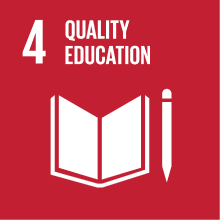HISTORY OF CREATIVITY AND INNOVATION
- Academic year
- 2025/2026 Syllabus of previous years
- Official course title
- HISTORY OF CREATIVITY AND INNOVATION
- Course code
- EM1713 (AF:570403 AR:319143)
- Teaching language
- English
- Modality
- On campus classes
- ECTS credits
- 6
- Degree level
- Master's Degree Programme (DM270)
- Academic Discipline
- SECS-P/12
- Period
- 3rd Term
- Course year
- 1
- Where
- VENEZIA
- Moodle
- Go to Moodle page
Contribution of the course to the overall degree programme goals
Combining theoretical insights (Bourdieu on cultural production, Wadhwani and Lubinski on entrepreneurial history) with empirical case studies (such as Hollywood’s rise, Italian cinema under Fascism, Barbie’s invention, and modern advertising in the U.S.), the course enables students to critically engage with the historical trajectories of cultural production, distribution, and commercialization.
By the end of the course, students will be equipped to analyze the evolution of cultural firms as economic actors and agents of symbolic power, innovation, and social transformation.
.
Expected learning outcomes
2. Students analyse key sectors (film, fashion, design, media) through the lens of business history
3. Students relate past practices of innovation and cultural production to current management and policy challenges
4. Students distinguish the role of institutions in promoting or inhibiting innovation and creativity, critically discussing historical and contemporary case studies.
5. Students are able to reconstruct and hypothesise about the different innovative strategies that companies and brands have adopted throughout their history, in terms of continuity and discontinuity, analogies and differences.
6. Students formulate hypotheses about continuity and discontinuity between current innovation strategies and those of the past.
7. Students comment on and present historical case studies, formulate hypotheses, and present their point of view concerning the theories presented in class and their previous knowledge.
Pre-requirements
Contents
Week 2: Entrepreneurship and innovation in cultural industries
Week 3: Mass culture, branding, cinema, and photography (1900-1950)
Week 4: Fashion, luxury & cosmetic industries (1960-1990)
Week 5: Branding creativity in a global age (1990-)
Referral texts
Unit 1: Pierre Bourdieu, "The Field of Cultural Production, or: The Economic World Reversed", Poetics 12, 4-5 (1983): 311–356 and Pierre Bourdieu, "The Market of Symbolic Goods", Poetics 14, 1-2 (1985): 13–44
Unit 2: Roberts, J. (2022). Luxury, craft, creativity and innovation. In P.-Y. Donzé, V. Pouillard, & J. Roberts (Eds.), The Oxford Handbook of Luxury Business (pp. 151–172). Oxford University Press
Unit 3: Daniel Wadhwani and Christina Lubinski, “Reinventing Entrepreneurial History” Business History Review, Vol 91, 4 (Winter 2017): 767–799
Unit 4: Valeria Giacomin and Christina Lubinski, "Entrepreneurship as Emancipation: Ruth Handler and the Entrepreneurial Process ‘in Time’ and ‘over Time’, 1930s–1980s", Business History, Vol 66, 7 (2023): 1888–1915
Unit 5: Marchand, Roland. Advertising the American Dream: Making Way for Modernity, 1920–1940. Berkeley: University of California Press, 1985. Chapter 1 Apostles of Modernity” (pp. 1–24) and 2 “The New Professionals” (pp. 25–51)
Unit 6: Nicoli, Marina, and Peter Miskell. “Entrepreneurs and the State in the Italian Film Industry, 1919–1935.” Business History Review 85, no. 4 (2011): 775–797
Unit 7: Bakker, Gerben. "Stars and Stories: How Films Became Branded Products." Enterprise & Society, vol. 2, no. 3 (2001): 461–502.
Unit 8: Tedlow, Richard S. "The Beginning of Mass Marketing in America: George Eastman and Photography as a Case Study." Journal of Macromarketing, vol. 17, no. 2, 1997, pp. 67–81.
Unit 9: Donzé, Pierre-Yves, and Ben Wubs. “LVMH: Storytelling and Organizing Creativity in Luxury and Fashion.” European Fashion: The Creation of a Global Industry, edited by Regina Lee Blaszczyk and Véronique Pouillard, Manchester University Press, 2018, pp. 63–85.
Unit 10: Donzé, P.-Y., & Fujioka, R. (2017). Luxury business. In Oxford research encyclopedia in business and management
Unit 11: Codignola, Federica. The Symbolic Power of Collectible Design: Mapping a Multifaceted Field. Ethics Press, 2025.
Unit 12: Mamidipudi, A., & Bijker, W. E. (2018). Innovation in Indian Handloom Weaving. Technology and Culture, 59(3), 509-545
Unit 13: Hashino, Tomoko. "The Survival Strategy of the Japanese Kimono Industry." Global Luxury: Organizational Change and Emerging Markets since the 1970s, edited by Pierre-Yves Donzé and Rika Fujioka, Routledge, 2018, pp. 257–274.
Assessment methods
1. Group work during the course (30%) and final test (True or False with explanation)- oral exam (70%)
2. Final test (True or False with explanation) and oral exam (100%)
Participation in group work must be communicated to the teacher by the second week of the course.
Type of exam
Grading scale
A. scores in the 18-22 range will be awarded in the presence of:
- sufficient knowledge and applied comprehension skills with reference to the syllabus;
- limited ability to collect and/or interpret data, making independent judgments;
- sufficient communication skills, especially in relation to the use of specific language pertaining to the history of economics and technology;
B. scores in the 23-26 range will be awarded in the presence of:
- fair knowledge and applied comprehension skills with reference to the syllabus;
- discrete ability to collect and/or interpret data, making independent judgments;
- fair communication skills, especially in relation to the use of specific language pertaining to the history of economics and technology;
C. scores in the 27-30 range will be awarded in the presence of:
- good or excellent knowledge and applied comprehension skills with reference to the syllabus;
- good or excellent ability to collect and/or interpret data, making independent judgments;
- fully appropriate communication skills, especially in relation to the use of specific language pertaining to the history of economics and technology.
D. honors will be awarded in the presence of knowledge and applied understanding with reference to the syllabus; excellent judgment and communication skills.
Teaching methods
Further information
2030 Agenda for Sustainable Development Goals
This subject deals with topics related to the macro-area "Human capital, health, education" and contributes to the achievement of one or more goals of U. N. Agenda for Sustainable Development


